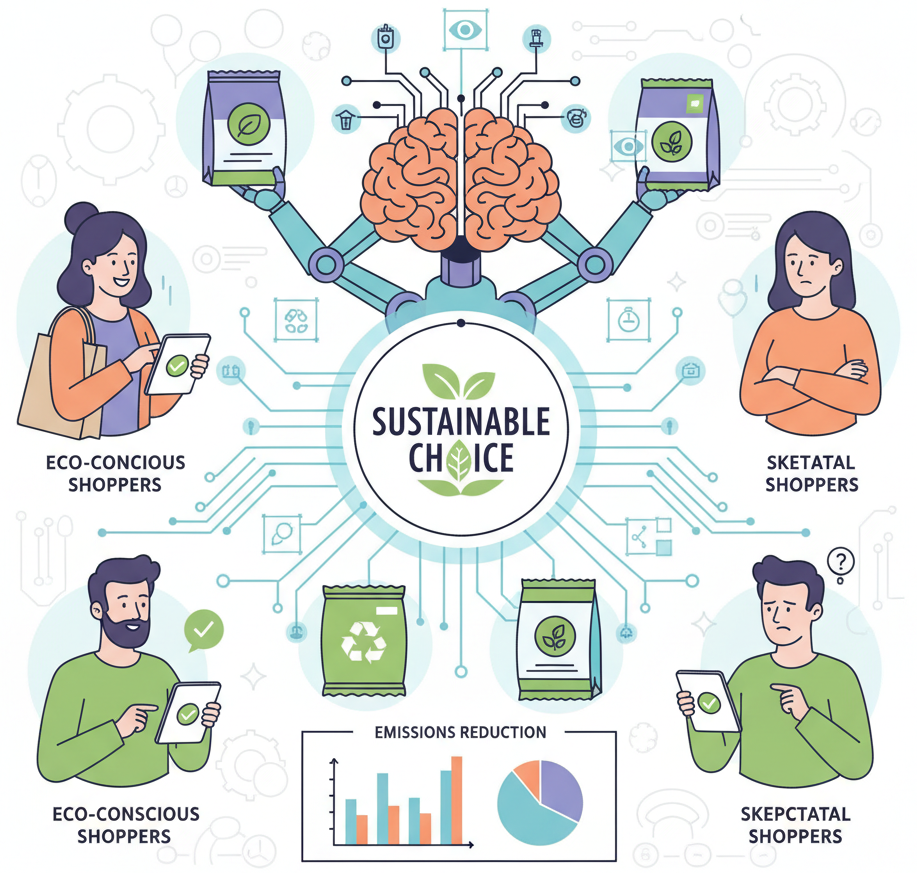Designing for Sustainable Choices: Leveraging Computer Vision and AI to Analyze Eco-Friendly Product Labels
highlight_off

Consumers increasingly seek sustainable products, yet the
effectiveness of eco-labels in influencing purchasing decisions varies widely.
This project will focus on the initial stages of the Design Thinking
process—Discover and Define—to study how visual cues on product packaging
related to sustainability affect consumer trust and choice. The insights will
guide the creation of tools to improve label transparency and encourage greener
consumer behavior.
The student will conduct foundational research using
advanced computational tools to analyze visual packaging cues associated with
sustainability claims. The work involves two main tasks, supported by
custom-built Google Colab tutorials.
- Computer
Vision Analysis:
Apply computer vision techniques such as image classification and object detection to a large dataset of product packaging images. The goal is to identify and categorize sustainability-related visual elements—eco-labels, certification logos, ingredient icons, and color schemes—to map their prevalence and diversity across product categories. - Data-Driven
Consumer Segmentation:
Using machine learning clustering and AI-assisted narrative generation, develop consumer segments based on how different demographic groups respond to sustainability cues. This will involve prompt engineering with Generative AI to create realistic user personas representing eco-conscious shoppers, skeptical buyers, and indifferent consumers.
Learning Outcomes:
Participants will gain hands-on experience in computer vision for packaging analysis, machine learning for consumer segmentation, AI prompt engineering, and integration of sustainable design principles. The outcomes will support future user-centered design of labeling strategies to promote sustainable consumption.
Participants will gain hands-on experience in computer vision for packaging analysis, machine learning for consumer segmentation, AI prompt engineering, and integration of sustainable design principles. The outcomes will support future user-centered design of labeling strategies to promote sustainable consumption.
Responsibilities / Work Plan:
- Implement
image processing workflows to extract and classify eco-label features from
packaging images.
- Perform
clustering analyses to segment consumers by response patterns to
sustainability labels.
- Use
Generative AI to craft detailed user narratives and visual personas for
each segment.
- Compile
results in a final report and deliver a presentation highlighting methods,
findings, and design implications.
6
Francisco Javier Benita Maldonado
francisco_benita@tec.mx
Sustainable Design
Computer Vision
AI-Generated Personas
Eco-labels
Consumer Behavior
Python
30 %
Design Thinking
30 %
Computer Vision
40 %





:
circle
circle
circle
circle
circle